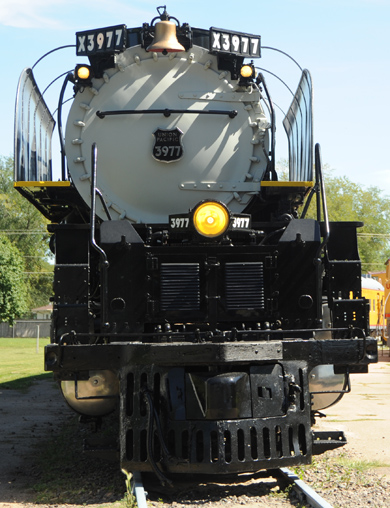Garrattfan's Modelrailroading Pages

Articulation
Articulated Steam Locomotives
Introduction and orientation
This part of my site is dedicated to my special interest: the world of articulated steam locomotives. Despite being a relative niche in the world of steam locomotives in general articulation is a vast subject. Therefore I have focussed on three subjects
- First I will try to give an overview of the many types developed.
- Then I will focus on the history of articulation in the Netherlands,
- to conclude with an index of remaining articulated locomotives in Europe
Now first discuss what an articulated locomotive is before anything else.
A what locomotive?
Most people that I talk to barely have a good idea of what a steam locomotive is. They consider it as a kind of iron dinosaur from an ancient past. They rarely ever realize that the decision to convert to diesel or electric traction is a purely political issue rather than an economical. Time and time again it has been proved that steam locomotives can be operated just as economical as diesels. Only few people, also very few indeed under railway enthusiasts, know anything of the great achievements on modern steam by Porta and others making steam a feasible option for the future.
Unsurprisingly most people have never heard of articulated locomotives either. Maybe in North American or South African circles this concept is a little more known. But as the Netherlands had only a handful of articulated steam locomotives ever it is hardly surprising that most people around me never heard of articulated steam locomotives.
Definition
An articulated locomotive is a locomotive in which one or more of the driven axles are able to take up positions where they do not remain parallel to the others and may take angular positions in curves. The axles may be driven by two separate engines or by a single one.
(Lionel Wiener, page 11, Articulated Locomotives, 1930)
Before diving deep into the matter I will give one famous example.
At North Platte's Cody Park this huge articulated steam locomotive is preserved. 4-6-6-4 No. 3977. Jim Wrinn photo. |
|
 |
The 3977 is of the Mallet type of articulation. It has two sets of drivers and the leading set can set itself to the curve of the track. This is beautfully demonstrated at Cody Park by putting the locomotive in a curve so the leading set sways out from the center showing off its articulation. Jim Wrinn photo. Why Articulation?The quest for increased power meant that locomotives had to be built larger and often longer. This caused problems however. Too large a number of driven axles fixed in a frame causes excessive wear of rails and wheels in sharp curves and increases the chance of derailment. Very often the more power demanding lines with steep inclines were also sharply curved. Since double-heading of engines is wasteful and cost ineffective, two smaller engines could not be used instead of one big one. The solution to the problem of power versus a short wheelbase is articulation, effectively joining two engines in one locomotive. There were, at one point or another, numerous methods of articulation, all of which meant that the rigid wheelbase of the engine was shortened, by placing the driving wheels in one or more independently moving bogies. |
A great many variations on the theme sprung to life as consecutive designers tried to solve the problems of previous designs. I will discuss there various solution in the types section.


Sign my
GuestBook